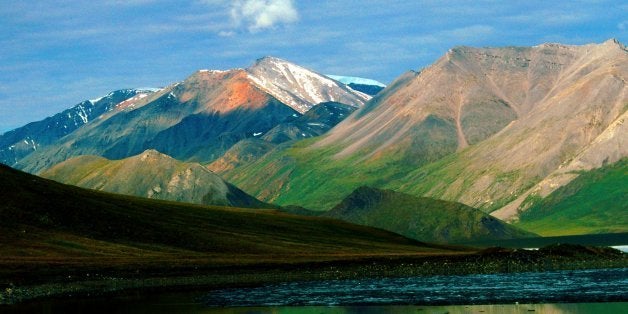
Critics denounce President Obama's proposed wilderness designation of virtually all of the Arctic National Wildlife Refuge (ANWR) as a concession to environmental extremists.
Just who are these extremists? It turns out that, according to a series of public-opinion polls conducted over the last few decades, the so-called extremists are a majority of the American people. What's more, the majority have every right to be protective of the 19-million-acre, Alaskan-based ANWR. That holds even though many of them may live thousands of miles away and are unlikely to ever visit the federal land mass and its unique treasure trove of biological diversity.
By virtue of proximity, Alaskans feel they have a special proprietary interest in the nation's ANWR. Many of them, led by their congressional delegation, are furious at the wilderness designation that, in effect, forever bans any exploitation of ANWR oil.
It has escalated to where Alaskan lawmakers have accused President Obama of declaring a war on their state by his unilateral action.
Alaskans are extremely upset, since their state derives 90 percent of its revenue from oil and gas royalties. For many years there were handsome returns, enabling the state government to distribute an annual check of more than $1,500 to every Alaskan resident. But with the world price of oil plummeting, so have Alaska's gross receipts, and the state is currently running a $3.6-billion budget deficit.
There is a message for Alaska in the oil economy's slowdown, coupled with humanity's need to gradually move away from fossil fuels in order to combat global warming. Perhaps it's time for the state to start reducing its heavy reliance on oil production and instead diversify its economy. How about greater emphasis on tourism and sustainable use of the state's abundant, renewable natural resources? Maybe Alaska should introduce a sales and/or income tax in its quest for solvency. Most other states impose one or both levies to fund government services. What about incentives to attract renewable-energy manufacturers? Much of the Alaska landscape is ideal for wind energy. Whereas part of the year the state is cloaked in virtual darkness, during the remainder the sun rides high in the sky, culminating in a near-round-the-clock presence for several months. Surely something can be worked out for solar energy.
Meanwhile, during the transition to renewables, Alaska has plenty of opportunity to benefit from oil revenues without drilling in ANWR. The state has 90 million acres of its own land open to oil and gas exploration, an area larger than Arizona and Utah combined. Approximately half of the 22.8-million-acre federal National Petroleum Reserve on Alaska's North Slope is open for development as well.
Still, Alaskans' long-held designs on ANWR remain unabated. They continue to dredge up the same discredited arguments to justify commercial development. Proponents repeatedly maintain that oil exploration would cover only 2,000 of the Refuge's biologically rich, 1.5-million-acre coastal plain. What is not mentioned are the 280 miles of roads, the hundreds of miles of pipelines, the 11 manufacturing facilities and the two new ports that would have to support the production of oil extracted from the drill sites. Moreover, while exploration might cease in the summer when ANWR is at its peak biological cycle, it is hard to believe that production would shut down during that time.
Would-be ANWR drillers raise the specter of national security as a rationale for mining the coastal plain's recoverable oil reserves. But it would take 10 years before most of the oil could reach customers, and in the past, much of that potential product was projected to go to Japan.
ANWR is our last totally intact wilderness system. With its priceless collection of 45 land mammal species, 200 different types of birds, 42 kinds of fish and varied plant life, it is our answer to the famed wildlife-crammed majestic great plains of East Africa.
The run at ANWR by the Alaska government, its allies in Congress, and the oil industry is the same old story. Their ultimate failure will be the same old ending.
